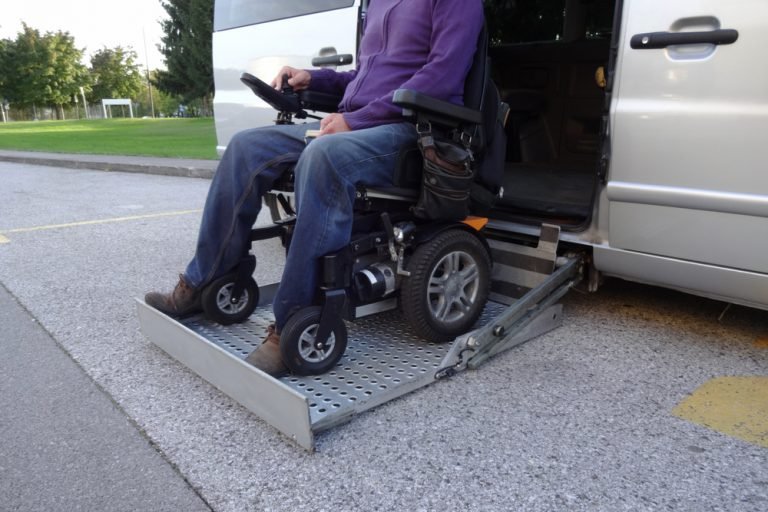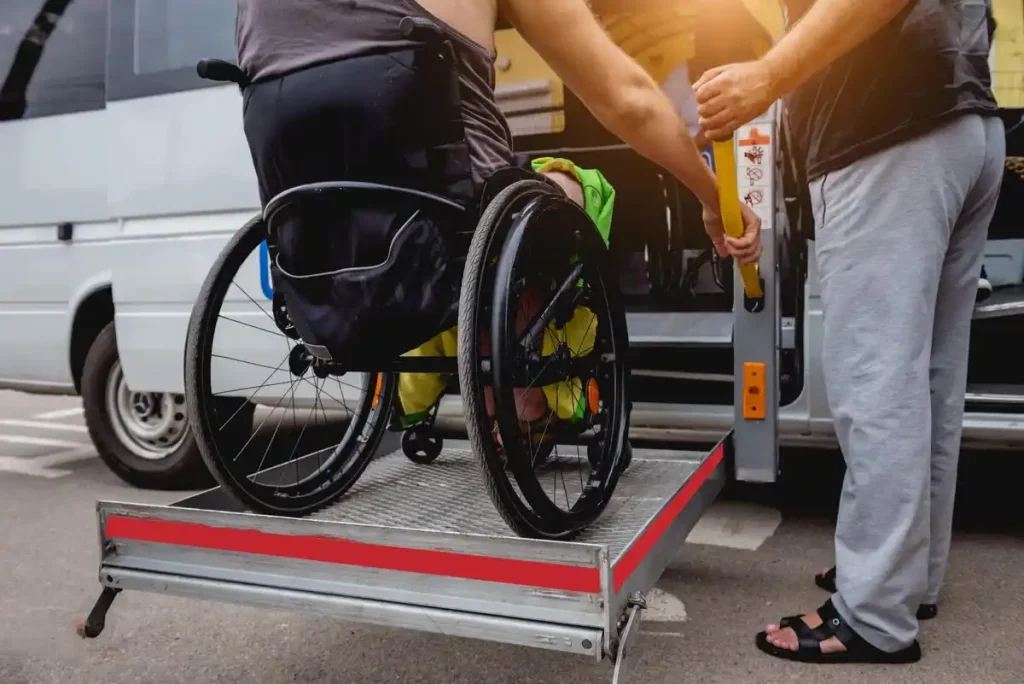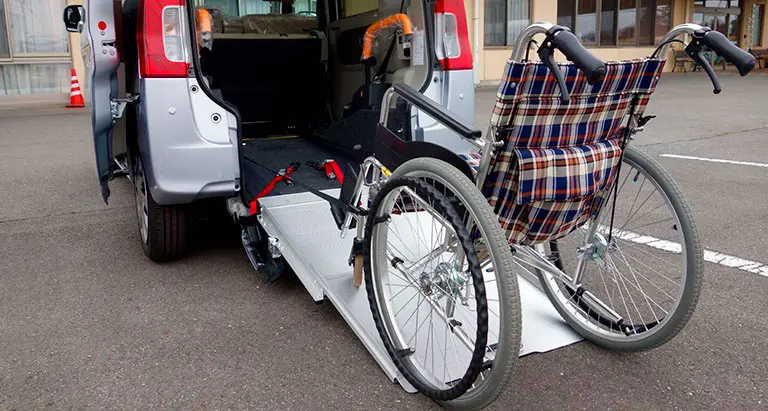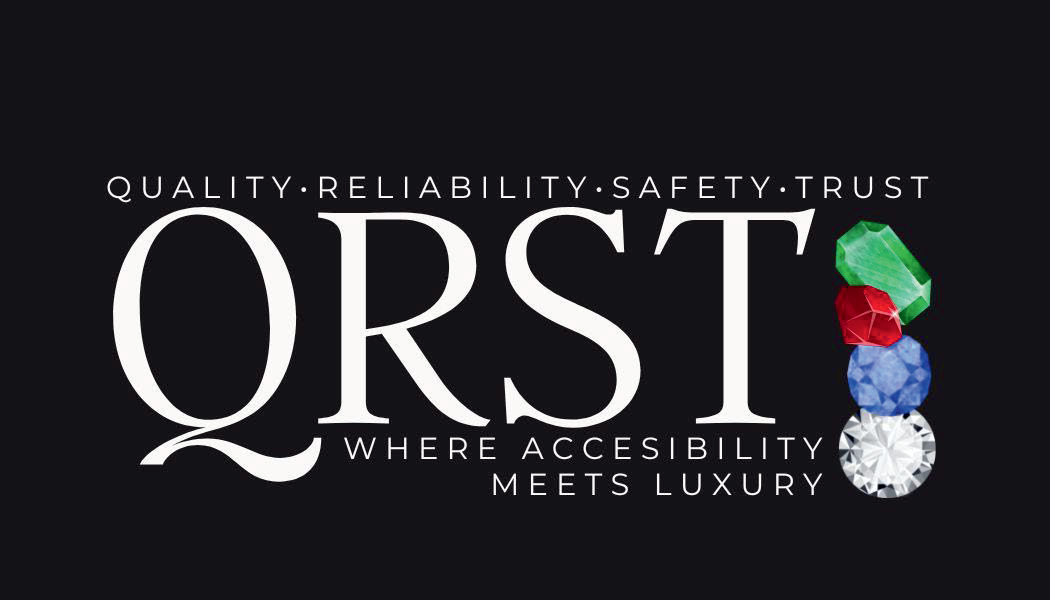When it comes to providing wheelchair transportation services in the DMV (District of Columbia, Maryland, and Virginia) region, safety and preparedness are paramount. In this guide, QRST Wheelchair Transportation will discuss essential emergency procedures to ensure the well-being of wheelchair-bound passengers during transit. Whether you’re a professional driver, a caregiver, or someone in need of these services, understanding these procedures is crucial. We’ll cover steps to take in case of accidents, medical emergencies, or other unexpected situations, helping you navigate any crisis with confidence and efficiency. Remember, being informed and ready can make all the difference in ensuring a safe and secure journey for all.
Safety First:
“Safety first” is a fundamental principle that should guide our actions in every aspect of life. Whether you’re driving a vehicle, working, or just going about your day, prioritizing safety is essential. It means taking precautions to protect yourself and those around you. When you’re on the road, this might involve obeying traffic laws, wearing a seatbelt, and avoiding distractions, which is particularly important for wheelchair transportation services. In the workplace, it could mean following safety protocols, wearing appropriate protective gear, and looking out for potential hazards. In everyday activities, it’s about being mindful of your surroundings and making choices that reduce risks. Remember, safety is not just a slogan; it’s a mindset that can prevent accidents, protect lives, and ensure a more secure and enjoyable experience for everyone. So, in all you do, let “safety first” be your guiding principle.
Communication:
Effective communication is the cornerstone of successful interactions, whether in our personal lives or professional endeavors. It’s more than just the words we say; it encompasses how we listen, understand, and respond. When we communicate well, we build connections, share ideas, and resolve issues. It’s about being clear and concise, but also being empathetic and sensitive to the needs and perspectives of others. In any situation, from daily conversations to critical business meetings, effective communication can prevent misunderstandings and foster collaboration. So, whether you’re a leader, a team member, or simply having a chat with a friend, remember that the art of communication is a powerful tool for building relationships and achieving common goals.

Seatbelt Securement:
Securing seatbelts is a simple action that can make a world of difference when it comes to safety in vehicles. It’s not just a matter of compliance with the law; it’s about protecting yourself and your passengers from harm. When you fasten your seatbelt, you’re taking a proactive step to prevent serious injuries in the event of an accident or sudden stop. This holds true whether you’re driving a car or riding as a passenger. In the world of wheelchair transportation, ensuring that the wheelchair and its occupant are properly secured with seatbelts and restraints is equally crucial. This emphasizes the importance of accessible transportation for disabled individuals, ensuring their safety and well-being on the road. It’s a small effort that can save lives and minimize injuries. So, before you hit the road, make it a habit to secure those seatbelts – it’s a simple act that can have a big impact on safety.
Accidents and Collisions:
- Stay Calm: In the event of an accident or collision, the first and most crucial step is to stay calm. This helps you think clearly and make sound decisions.
- Check for Injuries: Immediately check for injuries, both for yourself and your passengers. If anyone is hurt, call 911 for medical assistance.
- Safety First: Ensure the safety of everyone involved by moving to a safe location if possible. Turn on hazard lights, and use warning triangles if available to alert other drivers.
- Contact Authorities: Call the police to report the accident, providing all necessary details, such as the location, number of vehicles involved, and any injuries.
- Exchange Information: Share information with the other party involved in the accident. This includes names, contact details, insurance information, and vehicle registration.
- Document the Scene: If it’s safe to do so, take photos of the accident scene, vehicle damage, and any relevant road conditions. This can be valuable for insurance claims.
- Notify Your Supervisor: If you’re operating as part of a transportation service, inform your supervisor or dispatcher about the accident as soon as possible.
- Follow Legal Reporting Requirements: Be aware of and follow any legal reporting requirements or procedures specific to your area, especially for wheelchair transportation services.
- Stay Supportive: In case of injuries, provide support to your passengers while waiting for medical assistance. Do not move them unless it’s necessary for their safety.
- Cooperate with Authorities: Cooperate fully with law enforcement, provide accurate information, and follow their instructions.
- Post-Accident Support: After the accident, offer support to passengers who may be shaken or anxious. Reassure them and keep them informed about the situation.

Medical Emergencies:
Handling medical emergencies is a critical aspect of wheelchair transportation for DMV, just as it is for any such service. In the event of a medical emergency, the primary rule is to stay composed. If a passenger experiences a medical issue, the first step is to pull over to a safe location. Then, immediately call 911 to request professional medical assistance. If you’re trained in first aid, you can provide aid as needed, but be cautious not to move the passenger unless it’s absolutely necessary for their safety. Keeping a well-stocked first-aid kit on board is also advisable. Throughout the entire process, communication is key – keep passengers informed about the situation and ensure that you maintain a clear line of communication with emergency services. By staying calm, being prepared, and taking swift and coordinated action, you can help ensure the best possible outcome during medical emergencies in DMV wheelchair transportation services.
Fire or Smoke:
Dealing with fire or smoke while transporting passengers in wheelchairs requires a quick and composed response. First and foremost, your passengers’ safety is the top priority. In the event of fire or smoke in the vehicle, pull over to a safe location as soon as possible and turn off the engine. If there’s a fire extinguisher on board, use it cautiously to try and put out a small fire if it’s safe to do so. However, your main focus should be on safely evacuating all passengers, including those in wheelchairs. This underscores the importance of having strategies for wheelchair vehicle air conditioning problems to prevent potential fire risks and ensure the safety of all passengers. Ensure everyone is moved a safe distance away from the vehicle. Keeping an emergency escape plan in mind is a smart practice, as it can help you act swiftly and efficiently in such situations. Always call 911 to report the incident and request immediate assistance. Remember, when it comes to fire or smoke, it’s better to err on the side of caution and prioritize the safety of everyone involved.
Wheelchair Malfunctions:
Dealing with wheelchair malfunctions during transportation is a situation that requires a level head and quick thinking. If a wheelchair malfunctions, the first step is to ensure the safety of the passenger. If you’re trained to do so, you may attempt to manually release the wheelchair brakes or secure the passenger safely within the vehicle. If the malfunction can’t be easily resolved, it’s important to pull over to a safe location and call for assistance. Keeping a toolkit with basic repair supplies for common wheelchair issues can be invaluable in these situations. Maintaining open communication with passengers is also key, reassuring them and keeping them informed throughout the process. Remember, your priority is the well-being and safety of the passenger, so always take precautions and seek professional assistance if necessary when dealing with wheelchair malfunctions.

Evacuation Plan:
- Plan Ahead: Develop a clear evacuation plan well in advance, considering various emergency scenarios.
- Passenger Accessibility: Ensure passengers in wheelchairs can easily access exits. This may involve using ramps or assistance devices.
- Communication: Make sure passengers are aware of the evacuation plan and know where to find safety equipment like fire extinguishers.
- Practice: Regularly conduct evacuation drills with your passengers and staff to ensure everyone knows what to do in an emergency.
- Emergency Contacts: Keep a list of emergency contact numbers readily available, both for passengers and service providers.
- Clear Exits: Ensure all exits are unobstructed and easy to reach, especially in a wheelchair-accessible vehicle.
- Assistance: Designate specific roles for staff or fellow passengers to assist those with limited mobility during evacuations.
- Accountability: Have a system in place to account for all passengers once they’re safely evacuated.
- Alternative Transportation: In case the vehicle becomes unsafe to use, have a plan for alternative transportation options.
- Follow Local Regulations: Familiarize yourself with any legal requirements related to emergency evacuation for wheelchair transportation services in your area.
Emergency Equipment:
Equipping your wheelchair transportation service with essential emergency equipment is a vital aspect of ensuring passenger safety. Having these tools on board can make a significant difference in responding to unexpected situations. Some crucial emergency equipment to carry includes a well-stocked first-aid kit to address minor injuries, a flashlight for visibility in low-light situations, blankets to keep passengers warm, and a phone charger to maintain communication. These seemingly simple items can be invaluable in providing immediate assistance and comfort during emergencies. Regularly check and maintain this emergency equipment to ensure it’s always ready for use when needed. Remember, being well-prepared with the right tools can make all the difference in ensuring a safe and secure journey for everyone on board.
FAQ’s:
What is a wheelchair transporter?
A wheelchair transporter is a specialized vehicle or device used to securely transport individuals who use wheelchairs.
What is the word for transport for disabled people?
Transportation for disabled individuals is commonly referred to as “accessible transport” or “handicapped transportation.”
Does DC Medicaid cover transportation?
Yes, DC Medicaid often covers transportation services for eligible beneficiaries to access medical appointments and treatments.
How are wheelchairs transported?
Wheelchairs are transported using wheelchair-accessible vehicles, such as vans or buses equipped with ramps, lifts, and securement systems for passengers with mobility challenges.
What is the best way to transport a power wheelchair?
The best way to transport a power wheelchair is to use a vehicle equipped with a power wheelchair lift or ramp for safe and secure loading.
CONCLUSION:
In conclusion, ensuring the safety and well-being of passengers in wheelchair transportation services within the DMV region is of utmost importance. These emergency procedures are essential guidelines to navigate unexpected situations calmly and efficiently. By prioritizing safety, clear communication, and readiness, we can provide secure journeys and peace of mind for all passengers. Remember, being well-prepared is the key to ensuring safe and secure wheelchair transportation services in the DMV area.
